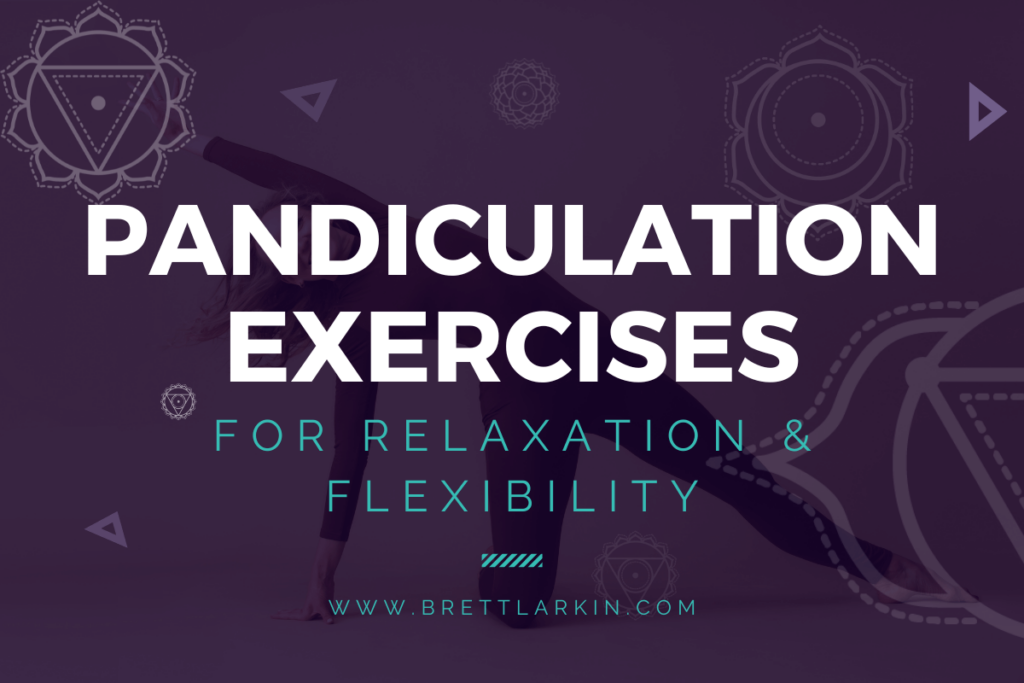You know that first big stretch in the morning? When you just wake up, yawning with your hands above your head and your whole body tenses into the stretch. Isn’t that the BEST feeling?
It’s also called pandiculation and actually improves musculoskeletal functioning. Let’s learn how…
What Is Pandiculation?

Pandiculation is a natural stretching and contracting movement that animals, including humans, instinctively perform to release tension and reset muscle tone. It involves simultaneous involuntary muscular contraction and stretching muscles to promote relaxation and improve flexibility.
Have you ever watched a baby stretch (cutest thing ever), had a yawn, or watched a dog/cat stretch their spines? These are examples of pandiculation. Pandiculation often happens upon waking or after long periods of inactivity, helping to wake up the sensory motor system and restore optimal muscle function. It’s basically your body’s signal to prepare for movement.
Because your body is built so beautifully, it will recognize when you’re holding yourself in a less than optimal position for too long. This is where it brings in pandiculation, to wake up the muscles and fascia, stretch and signal them back to their natural positions. Now, can recurring postural patterns, structural imbalances or trauma override this? Yes, but this is your body telling you to start paying attention to your movements and make corrections. Because your body WANTS to heal and WANTS you to feel your best.
How Does Pandiculation Work?
Overall, pandiculation works by harnessing the body’s natural ability to release tension and restore optimal muscle function through intentional stretching and contracting movements. When your muscles have been stagnant for too long the sensory motor cortex of your brain signals you to intentionally contract and stretch muscles simultaneously. This action stimulates the proprioceptors within the muscles, which are sensory receptors that provide feedback to the brain about muscle length and tension.
By engaging these proprioceptors, pandiculation triggers a neurological response that helps to reset the resting length of the muscles. This resetting reduces muscular tension and promotes relaxation. That’s why it always feels like the whole body is taking a big sigh.
Pandiculation also promotes increased blood flow to the muscles, which further enhances relaxation and flexibility.
You might be thinking ….you haven’t experienced an involuntary muscle contraction like this in quite a while. That could be because you haven’t! As I said earlier habitual muscular tension, repetitive movements or postural patterns will override the natural pandicular response. Causing some sensory motor amnesia.
If you’ve taken 200-hour teacher training with me then you already know that your fascia wants to work in your best interest. Meaning, even though it wants you to be in proper alignment for your unique musculoskeletal structure, if you continuously hold yourself in a specific position your fascia will adjust accordingly. Or if you’ve been injured your fascia will move to protect the affected area. Once this happens you’ve now got more tension than pandiculation can correct.
However, with somatic awareness and somatic healing you can start to correct this tension and bring the body back to homeostasis.
Experience My Somatic Yoga Workshop (usually $67) FREE!👇

Benefits Of Voluntarily Pandiculating Our Muscles
Even though pandiculation is often an involuntary movement, father of somatics Thomas Hanna discovered you CAN do it voluntarily. And it is a major benefit to your body!
Voluntary pandiculation is a deliberate and conscious act of stretching and contracting muscles.
Unlike involuntary pandiculation, which occurs instinctively, voluntary pandiculation involves intentionally engaging in stretching and contracting movements to target specific areas of the body. This practice is often used in therapeutic settings, such as yoga, physical therapy, and somatic coaching (working with someone who has a clinical somatic education) or somatic yoga, to improve flexibility, alleviate muscle tightness, and enhance overall well-being.
The benefits of voluntary pandiculation include:
- Muscle Relaxation: Voluntary pandiculation proved to relieve muscle soreness or muscle pain by stretching and contracting them, and reducing stiffness.
- Improved Flexibility: Regular practice of voluntary pandiculation movements can increase flexibility and range of motion in muscles and joints, enhancing overall mobility.
- Stress Reduction: Engaging in voluntary pandiculation has a calming effect on the nervous system. This calming effect will reduce stress levels and promote relaxation and well-being.
- Pain Relief: By releasing muscle tension and working towards better alignment, you’ll alleviate discomfort and pain, particularly chronic back pain and chronic muscular tension..
- Enhanced Body Awareness: Voluntary pandiculation encourages mindfulness and body awareness, helping you to tune into your physical sensations and better understand your body’s needs.
- Improved Posture: Regular practice of voluntary pandiculation helps correct imbalances in muscle tone and poor posture, promoting better alignment and maintaining healthy posture which reduces your risk of injury.
- Energizing Effect: While this voluntary movement promotes relaxation, it can also have an invigorating effect, increasing blood flow and circulation throughout the body, leaving you feeling more energized and revitalized.
Overall, it is a holistic approach to improving physical and mental well-being, promoting relaxation, flexibility, and a greater sense of body awareness.
Take my feminine energy quiz to get a recommended practice for balancing YOUR feminine energy 👇
5 Pandiculation Exercises
The following are some dynamic stretching exercises to give you an idea of what pandiculation feels like and help you release chronic tension.
1. Cat/Cow Stretch (Marjaryasana/Bitilasana)
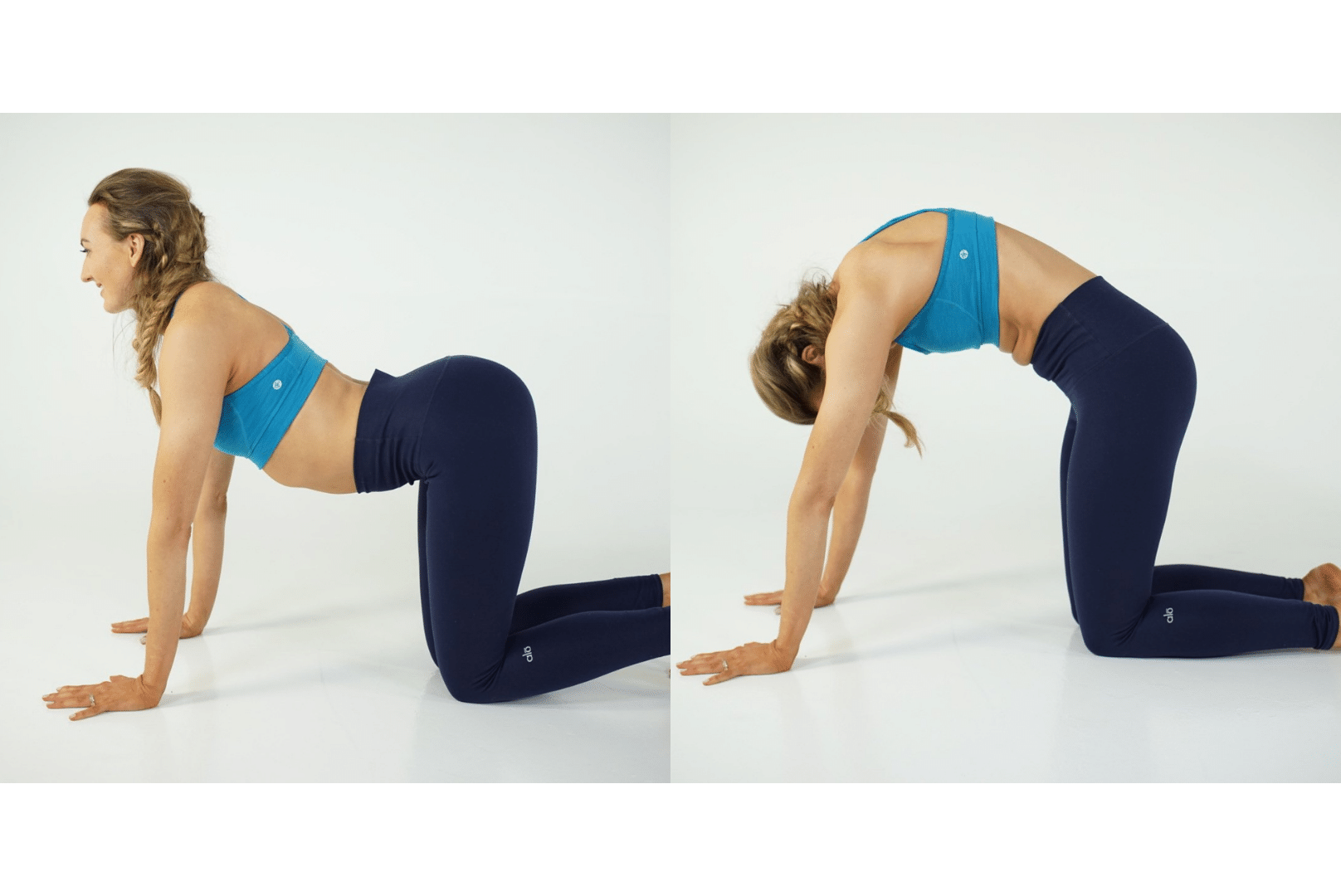
- Start on your hands and knees with a neutral spine.
- Inhale as you arch your back, lowering your belly towards the floor and lifting your head and tailbone (Cow Pose).
- Exhale as you round your spine, tucking your chin towards your chest and drawing your belly button towards your spine (Cat Pose).
- Repeat this flowing movement, coordinating breath with movement.
2. Hamstring Stretch (Janu Sirsasana)
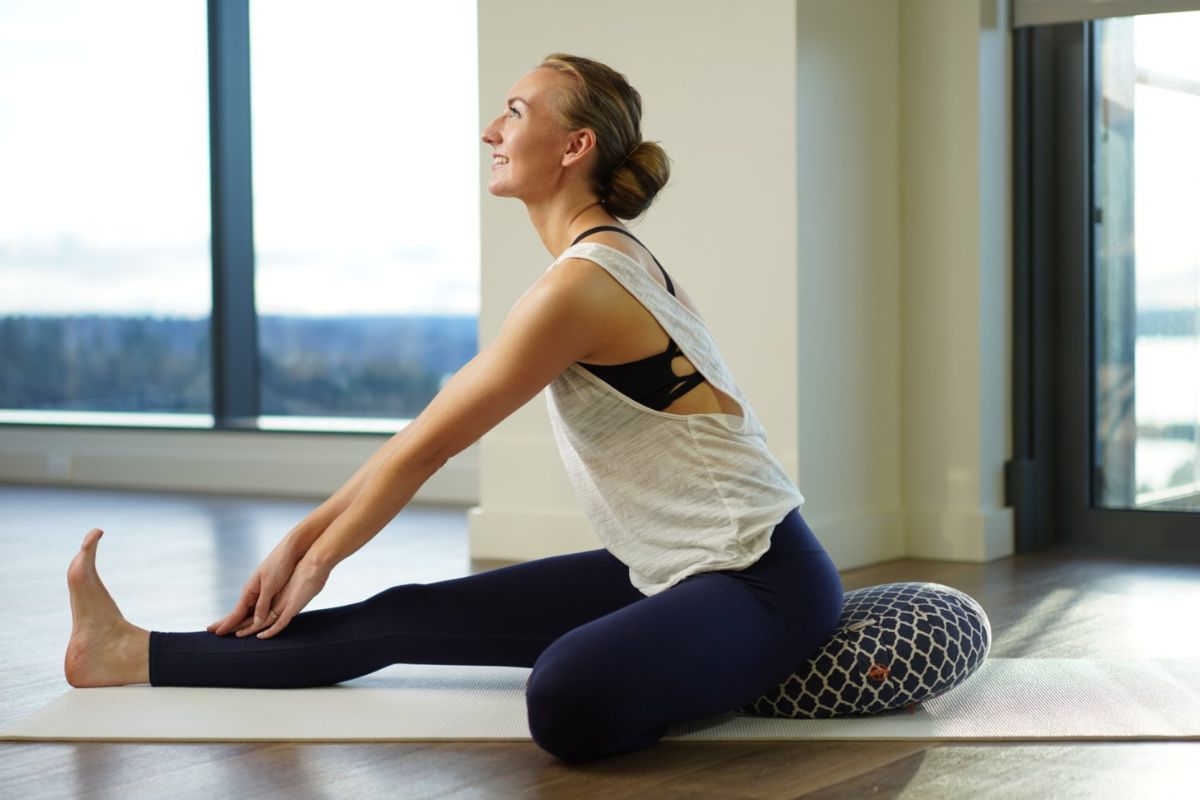
- Sit on the floor with one leg extended and the other bent, sole of the foot against the inner thigh.
- Hinge at the hips and reach towards the extended foot, keeping the spine long.
- Hold for a few breaths, then engage the hamstring by pressing the heel into the floor while you draw the toes towards you.
- Release and repeat on the other side.
3. Shoulder Rolls
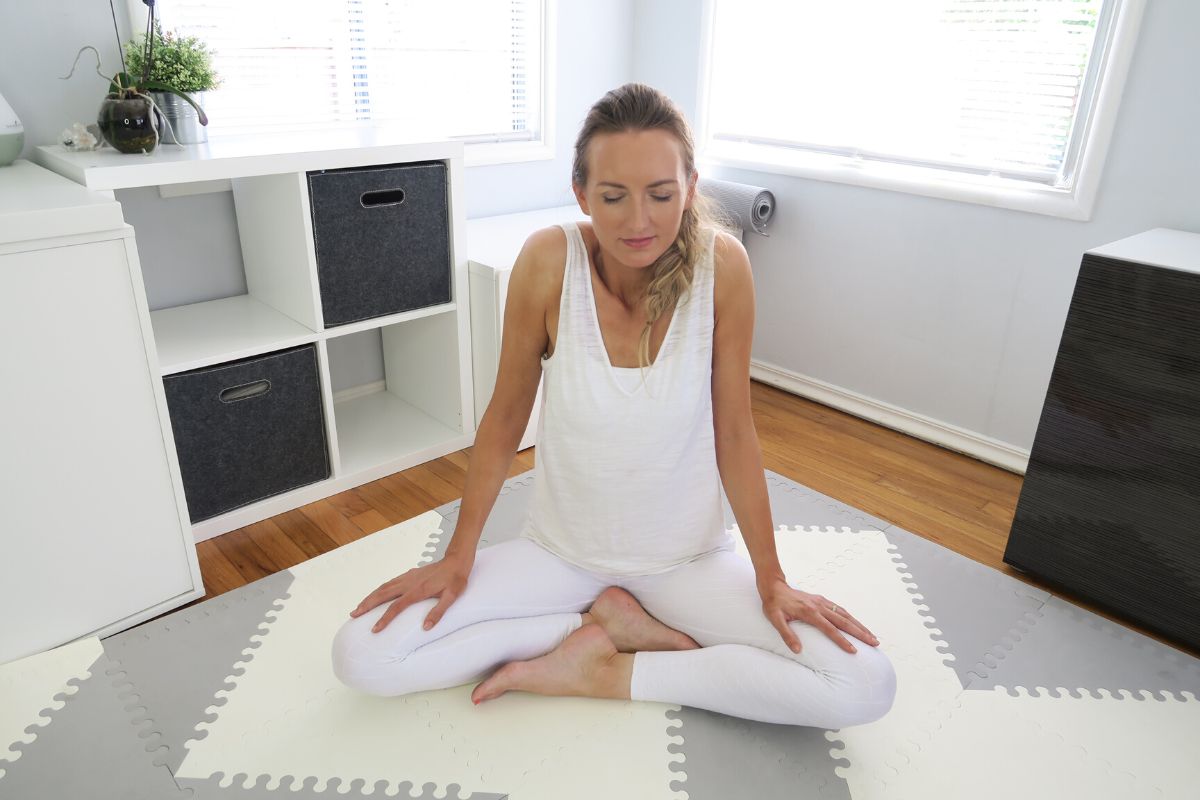
- Stand or sit tall with your arms relaxed by your sides.
- Inhale as you lift your shoulders towards your ears, then exhale as you roll them back and down, feeling the shoulder blades move together.
- Repeat this rolling motion several times, coordinating breath with movement.
4. Neck Stretch
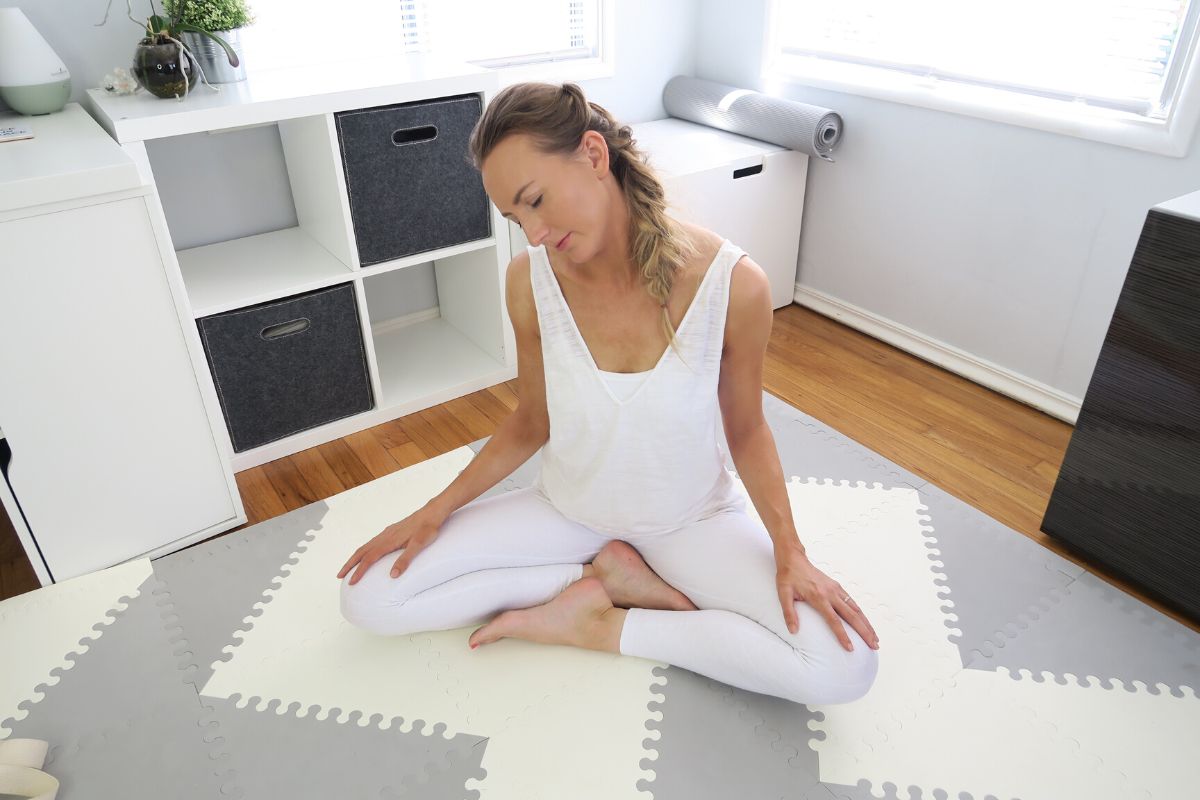
- Sit or stand tall with your shoulders relaxed.
- Tilt your head to one side, bringing your ear towards your shoulder until you feel a stretch along the opposite side of your neck.
- Hold for a few breaths, then switch sides.
- You can also gently rotate your head from side to side or perform chin tucks to release tension in the neck muscles.
5. Full-Body Pandiculation (Good Morning Stretch)
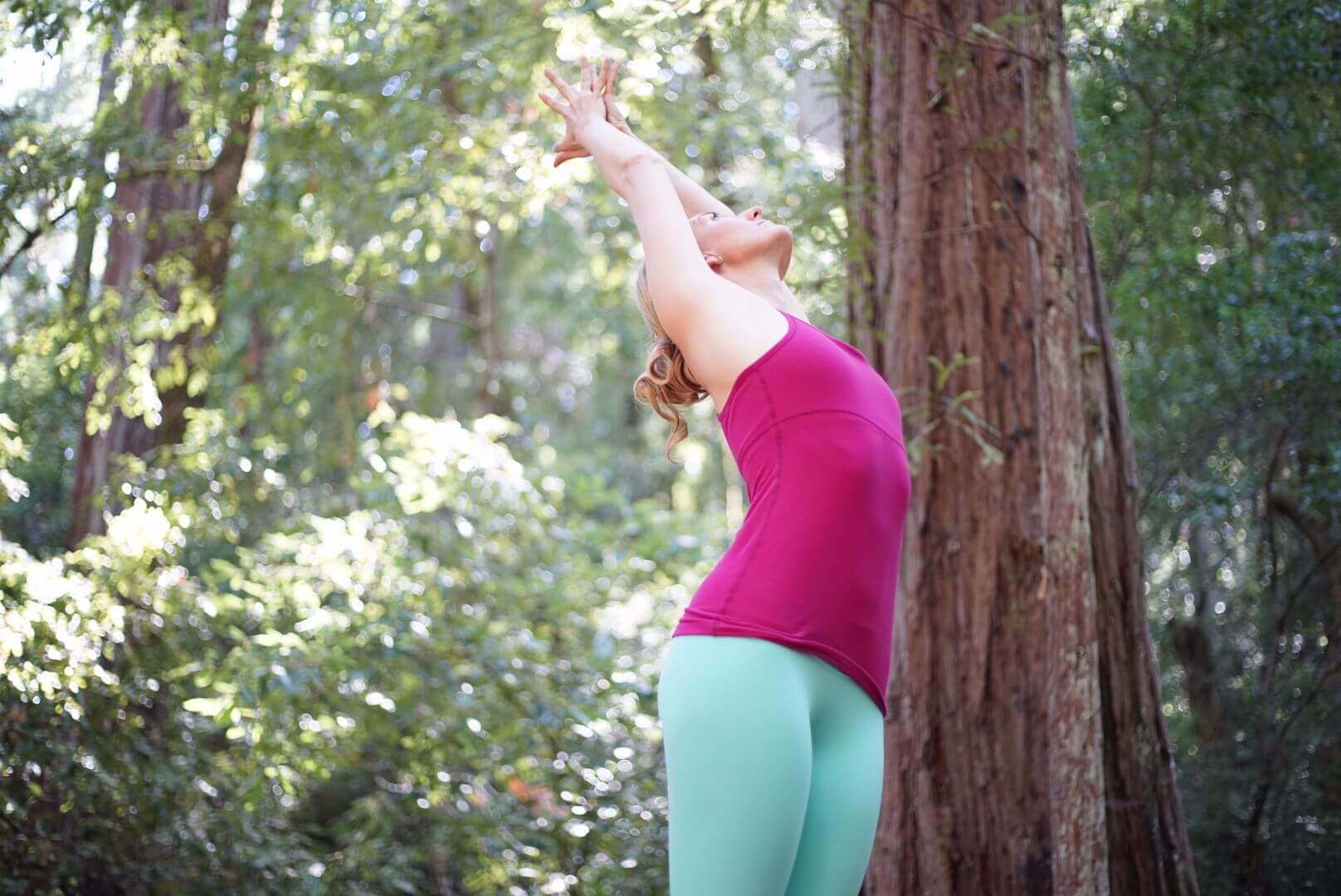
- Stand tall with your feet hip-width apart.
- Inhale deeply, reaching your arms overhead and lifting your heels off the ground.
- Exhale as you slowly lower your arms and heels back down, feeling a stretch through your entire body.
- Repeat this movement several times, allowing each exhale to deepen the stretch.
NOTE: You can add some juicy somatic movements into any of these exercises by incorporating slow spiral motions or undulations. Or, you can always find a certified clinical somatic educator to provide you with exercises more specific to your situation.
Common Questions About Pandiculation
You might still have a couple of questions. Perfect! Here are two of the most common questions about this popular type of somatic movements.
What is the difference between stretching and pandiculation?
While both stretching and pandiculation aim to release muscle tension and improve flexibility, they involve different approaches and physiological mechanisms:
- Stretching: Stretching involves lengthening a muscle to its end range of motion and holding the position for a period of time. This passive approach primarily targets the muscle’s elasticity, gradually increasing its length over time. Stretching can help improve flexibility and range of motion, but it doesn’t necessarily address muscle tension at its source.
- Pandiculation: Pandiculation is an active process that combines stretching and contracting movements. It involves intentionally contracting a muscle before slowly lengthening it. Engaging both the muscle fibers and the central nervous system. Pandiculation stimulates proprioceptors within the muscles, providing feedback to the brain about muscle length and tension. This neurological feedback helps reset the resting length of the muscles, releasing tension and promoting relaxation more effectively than static stretching alone.
Why does stretching in the morning feel good?
That glorious morning stretch feels good for several reasons:
- Releases Muscular Tension: During sleep, certain muscles may become tense or stiff due to lack of movement. Stretching in the morning helps to gently release this tension, promoting relaxation and improving overall comfort.
- Increased Blood Flow: Stretching increases blood flow to the muscles, delivering oxygen and nutrients while flushing out metabolic waste products. Increasing circulation helps you wake up and feel refreshed.
- Improved Flexibility: Morning stretching improves flexibility by gradually lengthening the muscles and increasing range of motion. This leads to greater ease of movement throughout the day, release of any chronic pain and tension and lowers your risk of injury.
- Enhanced Mind-Body Connection: Stretching in the morning connects you to your body first thing. Tuning into your physical body first thing and focusing on your breath starts your day more grounded and present.
- Mood Boost: Stretching activates the parasympathetic nervous system, which is responsible for promoting relaxation and reducing stress. This uplifts mood and a higher sense of well-being to start the day on a positive note.
Closing Thoughts
Ultimately, just stretching oneself is not enough to bring the body back to homeostasis. Your body instinctively knows this, which is why it developed this extremely important function. Start adding these movements to your day for the next 30 days and see how you feel. If you prefer guided movement don’t forget to check out this video on my channel:
Next Steps
- Take a deep dive into embodiment and somatic yoga with my Somatic Yoga certification program.
- If you’re interested in practical kriya yoga as a way to improve your daily life and relationships, check out my Yoga for Self Mastery course.
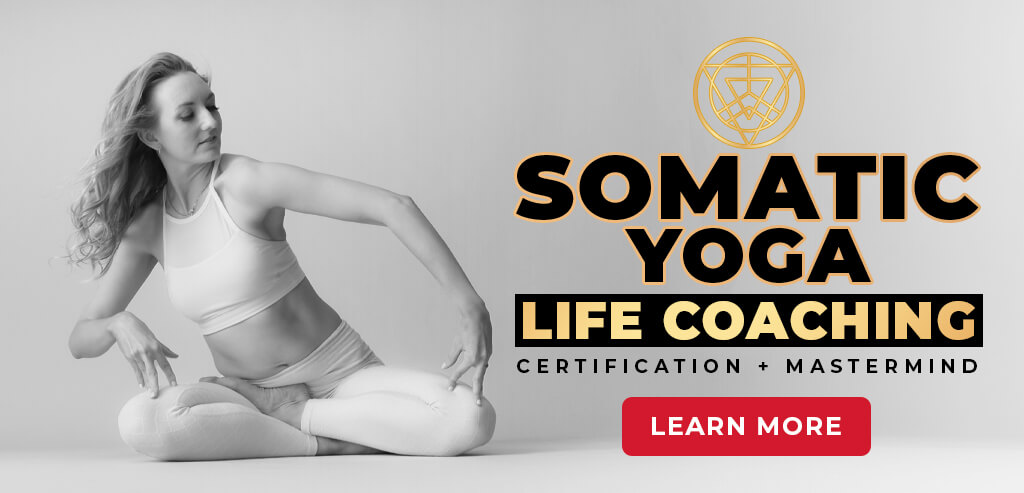
FREE Embodied Yoga Workshop (usually $67) Somatic Techniques & Cord Cutting Ritual

YOU MIGHT ALSO LIKE
- Somatic Yoga for Cortisol Detox: A Gentle Path to Stress Relief and Nervous System Healing
- Gentle Somatic Yoga: Heal Chronic Pain, Release Trauma, and Reclaim Your Bod
- Somatic Meditation: A Body-Based Approach to Healing Stress, Anxiety, and Trauma
- Advanced Pelvic Floor Breathing: A Somatic Approach to Healing
- Somatic Yoga For Yoga Teachers: Everything You Need to Know in 10 Steps
- How Somatic Shaking Can Release Tension and Reset Your Nervous System
- Discover Somatic Pilates: Enhance Your Body Awareness and Flexibility
- Kundalini for Feminine Energy: Ignite Your Creative Power and Passion
- 6 Effective Somatic Yoga for Neck and Shoulders
- How to Teach Somatic Yoga: A Practical Guide for Instructors
- The Best Somatic Exercises for Grief: Find Healing Through Movement
- The Best Somatic Exercises for Anger Management and Emotional Release
- How to Teach Somatic Yoga to Beginners
- Best Somatic Yoga Poses for Emotional Release and Healing
- The Rich History of Somatic Yoga: From Origins to Modern Practices

